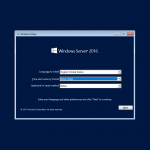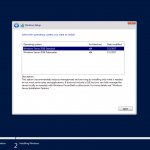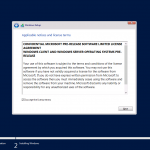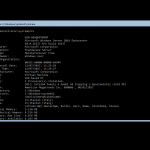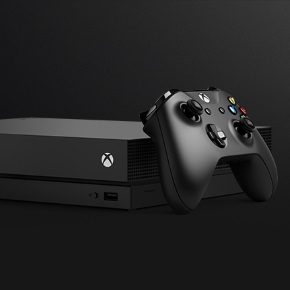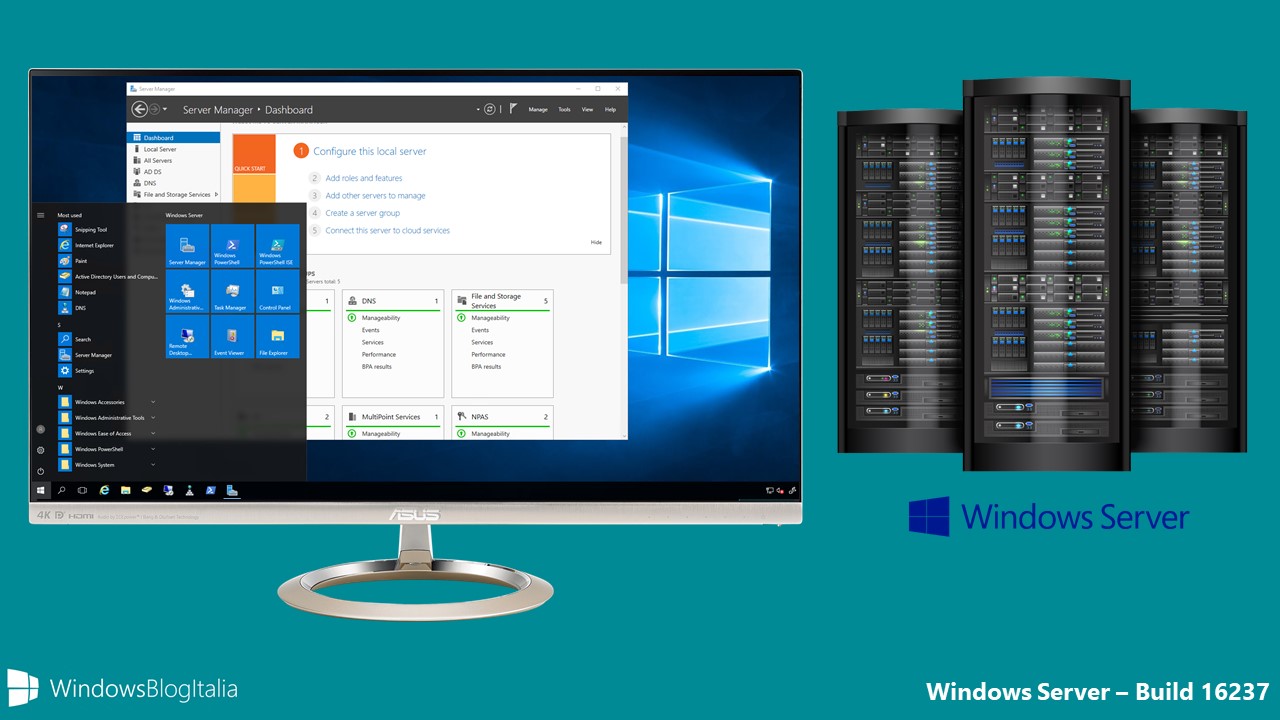
Poche settimane fa, Microsoft ha annunciato la nuova roadmap semi-annual (ovvero semestrale) che introdurrà nuove funzioni anche per Windows Server, con l’introduzione del programma Windows Insider – Il programma Insider di Windows Server debutterà nelle prossime settimane. Questa volta è stata di parola e da poche ore è disponibile la build 16237.
AGGIORNAMENTO 2 | Microsoft ha appena rilasciato il changelog completo. Maggiori informazioni sono disponibili a questo indirizzo.
Novità di Windows Server Build 16237
Persistent Memory can now be exposed to Hyper-V VMs
- In this build, NTFS-formatted direct access volumes that are created on non-volatile DIMMs can now be exposed Hyper-V VMs. This enables Hyper-V VMs to leverage the low-latency performance benefits of Persistent Memory devices.
- Virtualized Persistent Memory (vPMEM) is enabled by creating a VHD file (.vhdpmem) on a direct access volume on a host, adding a vPMEM Controller to a VM, and adding the created device (.vhdpmem) to a VM. Using vhdpmem files on direct access volumes on a host to back vPMEM enables allocation flexibility and leverages a familiar management model for adding disks to VMs.
- PowerShell can be used for the creation and management of Virtualized Persistent Memory.
Battery Passthrough
- With new additions to Set-VM, a PowerShell cmdlet, you can now enable and disable Battery Passthrough, a new feature. Battery Passthrough let your VMs have the same battery state as the host they are on. To use this feature of Set-VM, use the flag -BatteryPassthroughEnabled {$true, $false}. This option is only available for version 8.2 virtual machines.
Improvements to Container Networking
- This build introduces enhancements to container networking to better support Kubernetes by adding support for multiple containers (w/out Hyper-V isolation) to a single Pod (Network Compartment) as well as only requiring a single endpoint per Pod for all traffic types (e.g. ingress and East-West)
- The Host Networking Service (HNS) now has support for creating ACL, NAT, and Load Balancing network policies for Container endpoints for fine-grained policy application.
RDMA for Trusted Guests
- This build includes several enhancements for (Trusted) Guest RDMA to enable low-latency storage access with zero CPU usage by Trusted Guest VMs – this is ideal for running Windows File Servers in a Guest to accelerate file serving. Requires updated NIC drivers.
Improvements to Software Defined Networking
- Encryption can be enabled for virtual network subnets to protect your traffic from anyone with physical access to the wire, including network administrators.
- Failover time for SDN gateways is improved. Now, you will observe much faster failover times for the gateways, even with high number of connections.
- Access control lists can be applied for infrastructure on logical subnets.
Improvements in Networking transports
- 2X throughput improvement for single connection TCP and UDP performance in low latency intra-datacenter scenarios
- Default congestion control algorithm CUBIC for high speed networks
Improvements in HTTP(s)
- SSL throttling to enable predictable service for established connections, in the face of high incoming SSL traffic.
- Deterministic certificate updates for HTTPS enabling greater service availability.
Improvements in time accuracy:
- Pressing EU regulations in 2018 require strict time precision and traceability. Win32tm improvements in RS3 support greater time accuracy, and jitter is removed from the measurements that calibrate the service.
- New system event logging lets you archive time service data to support traceability compliance.
- System center monitoring now includes a new rule which lets you detect when a machine in your environment is out of compliance.
Nano Server optimized for Containers
- Nano Server is now a container only option and optimized for containers, more information is available in the Delivering continuous innovation with Windows Server blog post. To optimize for containers, several features were removed that were in the Nano Server base image in Windows Server 2016, these include WMI, PowerShell, .NET Core, and the Servicing stack, which has significantly reduced the image size.
Server Core base image optimizations
- The Windows Server Core base image has been optimized saving over 20% download and on disk space.
Problemi noti
- Local vs remote management: Some command-line tools and PowerShell modules may not be available for use locally on a Server Core installation. To remotely manage Server Core by using the full set of GUI tools, command-line tools, and PowerShell modules, use Remote Server Administration Tools for Windows 10, available for download from the preceding link.
- If a user attempts to update to the latest OS build on a device that has .NET Framework 3.5 installed, the update may fail because of a side-by-side (SXS) assembly missing error (0x80073701), and the device will roll back to the previous build. To work around this issue, uninstall .NET Framework 3.5, perform the OS update, and then reinstall .NET Framework 3.5. (The last step is optional if the user does not have apps that are dependent on .NET Framework 3.5.)
Some devices using a common 64-bit chip architecture may not be able to update to the latest OS build because of an unexpected error (E_UNEXPECTED, error code 0x8000FFFF). - An app may become unresponsive because of an application hang end task error (0xCFFFFFFF) in the Windows firewall API library (FirewallAPI.dll), which occurs when the library is blocked on an advanced local procedure call (ALPC) while attempting to diagnose a connection failure and retrieve information during network isolation.
- Cluster Sets: A couple of key functionalities to enable end-to-end testing of Cluster Sets scenarios are not present in this build, so defer all evaluation of this scenario to a future build.
- Bugcheck during volume creation: A stop error may occur during volume creation in a cluster. The recommended workaround is, after restarting the computer, to delete the volume and try creation again.
- Bugcheck during volume repair: A stop error may occur during volume repair in a cluster. The recommended workaround is to restart the computer. No corruption or data loss is expected.
- AEP is not supported in this build.
- Clone support for Hyper-V isolated containers does not work, this can be disabled temporarily and will be fixed in subsequent Insider Preview builds. See the Insider section on http://aka.ms/containers for more details.
AGGIORNAMENTO 1 | È disponibile al download anche il file .ISO non ufficiale creato utilizzando i file di installazione presenti nei server Microsoft.
https://twitter.com/WithinRafael/status/885028724663619584
Seguono alcuni screen del processo di installazione di Windows Server Build 16237.
Windows Server Insider Preview Build 16237
La build 16237 non è stata ancora rilasciata ufficialmente da Microsoft, ma è stata caricata sui server del colosso. Probabilmente verrà rilasciata per tutti nelle prossime ore.
https://twitter.com/h0x0d/status/884573565055508480
Microsoft ha deciso di far rientrare anche Windows Server nel programma Insider per velocizzare gli aggiornamenti delle funzionalità, offrendo ai clienti che stanno innovando un’opportunità per provare le nuove funzioni a un ritmo più veloce. I partecipanti avranno accesso sia a nuove applicazioni – in particolare a quelle relative a container e microservice – sia al software del sistema operativo del datacenter.
Per ottenere l’accesso alle versioni in anteprima di Windows Server:
- Iscrivetevi al programma Windows Insider per le aziende.
- Registrate un dispositivo Windows 10 in questo programma – verranno chiesti dei feedback usando l’apposito hub.
- Guardate il blog di Windows Server, dove verranno annunciate le build in anteprima.
Siete in possesso di un server con Windows? Proverete la build 16237? Parteciperete al programma Windows Insider per le aziende? Fatecelo sapere nei commenti.
Articolo di Windows Blog Italia


